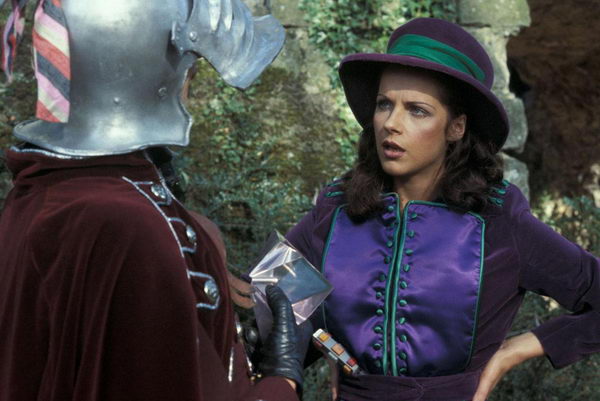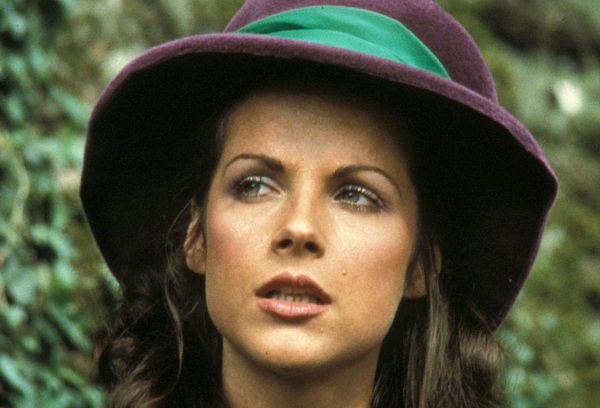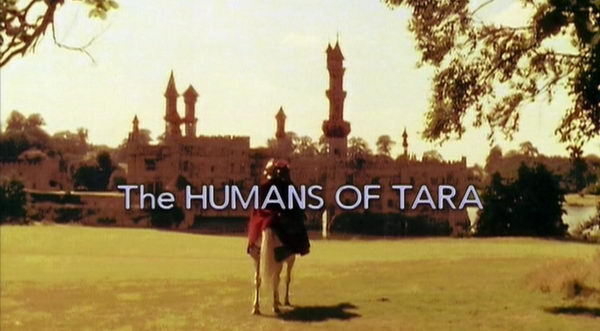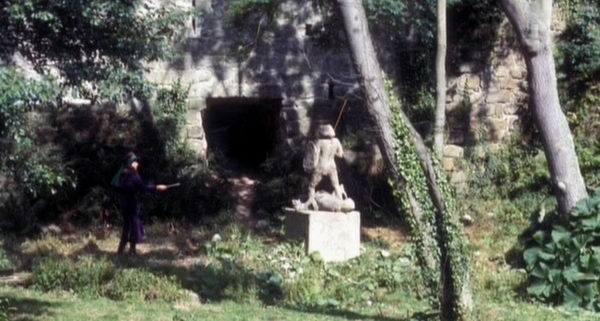|
| |
|
STORY PLACEMENT THIS STORY TAKES PLACE BETWEEN THE BIG FINISH AUDIO BOOK "FERRIL'S FOLLY" AND THE TV STORY "THE POWER OF KROLL."
PRODUCTION CODE 5D
WRITTEN BY DAVID FISHER
DIRECTED BY MICHAEL HAYES
RATINGS 9.1 MILLION (9.2 MILLION WHEN REPEATED)
WORKING TITLES THE ANDROIDS OF ZENDA, THE ANDROIDS OF ZEND & THE SEEDS OF TIME
RECOMMENDED PURCHASE 'THE KEY TO TIME' DVD BOXSET (BBCDVD2335) RELEASED IN SEPTEMBER 2007.
BLURB IT SEEMS THAT THE SEARCH FOR THE FOURTH SEGMENT OF THE KEY TO TIME WILL PROVE SIMPLE WHEN ROMANA LOCATES IT ON THE PLANET TARA. BUT IN A LAND WHERE NOTHING IS AS IT FIRST APPEARS, THE DOCTOR AND HIS COMPANION QUICKLY FIND THEMSELVES EMBROILED IN A DEADLY GAME OF KIDNAP, DECEIT AND COUNTERPLOT.
IT IS NOT LONG BEFORE THE DOCTOR HIMSELF IS LOCKING SWORDS WITH THE DASTARDLY COUNT GRENDEL OF GRACHT, THE FINEST BLADESMAN IN THE KINGDOM, WHO HAS SINISTER PLANS FOR ROMANA... |
|
|
The Androids of Tara 25th november 1978 - 16th december 1978 (4 EPISODES)
When I first saw “The Androids of Tara” many years ago I was most unmoved to say the very least. For some reason though, with each repeated viewing it has grown on me more and more until today, even though it is still far from what I would consider to be a great Doctor Who story, it certainly makes for an entertaining 100 minutes or so.
A lot of this serial’s appeal hinges on Mary Tamm, who enjoys possibly her strongest outing in the series. Playing not only Romana but also Princess Stella and both their respective android counterparts, Tamm is really given a chance to shine here.
“I wanted you then, Mary, and I still do!” – Tom Baker
And working my way through this magnificent “Key to Time” DVD box set, if one thing is apparent it is that Tamm reduces Tom Baker to a gibbering wreck of man. And so arriving at a serial that sees Tamm play not one; not two; but three different characters is bordering on dangerous! However Baker made it through the commentary recording without giving himself a coronary, I will never know.
The story itself - David Fisher’s second commission in a row – is a conscious homage to Anthony Hope’s nineteenth century adventure novel The Prisoner of Zenda. The DVD’s feature documentary, the 21-minute “Humans of Tara”, focuses heavily on the parallels between Zenda and this story, and so having seen how desperately plagiarised “The Androids of Tara” actually is I can fully understand why Fisher said that the scripts were “easy to write”’. All he did was to change a few names and stick in a couple of androids!
I was also quite interested in how the documentary showed that under Graham Williams, Doctor Who shifted away from its gothic movie influences and instead began to draw its inspiration from myths, legends and literature. I think that this change of direction is much more obvious in this story than in any other; “The Androids of Tara” may have had the flying horses excised from the script, but as it is laden with castles and princes and even the ‘gimbling’ Count Grendel, this serial possess a distinct fairytale quality. As daft as it sounds, watching it again brought the recent Shrek movies to mind - “The Androids of Tara” is very much of that world.
Now I am not a big fan of the “Now and Then” featurettes that regularly crop up on these DVD releases, but on this occasion my interest was piqued as the locating shoot had been carried out at ‘Leeds Castle’, which is apparently in Kent. To me, that sounds just as crazy as having May week in June, but there you go. Seriously though, there is one particular shot in the story – Grendel and Romana on horseback looking at a wide shot of Castle Gracht – that is absolutely stunning, and I had always just assumed that they had found a castle somewhere that was adorned with minarets and other such apt features. However, believe it or not it was using a painting and CSO that created that shot.
The DVD’s other substantial bonus feature is an 11-minute featurette entitled “Double Trouble”, which as you would probably guess from the title, explores the history of doubles in Doctor Who. The feature is a natural extension of “The Humans of Tara” documentary really; I am not sure why it was made separately but regardless, I was astonished as to just how many doppelgangers there have been in the series. Off the top of my head I could only think of “The Massacre” and “The Enemy of the World”, but if you are prepared to stretch a point, half the stories in the canon feature a double of some shape or form! Mel and the Rani was pushing it a bit, though…
One thing that I do really like about this story is how much fun Fisher has with things. Having Romana locate the fourth segment of the Key to Time in the first few minutes is a truly wonderful touch; just as the ‘quest’ format was starting to get old, Fisher revitalises it by, ironically, almost completely removing it from his script!
Other elements of the story I am less keen on. The android Prince (dubbed ‘George’ by the Doctor) sounds a bit like Borat - “I… am… well” – and for me, the concurrence of medieval castles and technological androids just did not really work. Do not get me wrong, in a story like “The Time Warrior” it works very well because, in essence, two worlds are colliding. Here, however, one is expected to believe that a feudal society somehow learned to build highly sophisticated androids before they could build cars or power plants.
“If you don’t stop burning my scarf you’re going to have to kill me.”
If for nothing else though, “The Androids of Tara” has to be watched for the sublime performances of Peter Jeffrey (Count Grendel), Tamm and Baker, amongst others. This story may be the weakest of the Key to Time season thus far, but it is certainly no clanger. Perhaps it is indeed one that grows on the viewer with time – approximately 100,000
people more tuned into the repeat over
the summer on 1979 than they did to the original 1978 broadcast!
|
|
|
Copyright © E.G. Wolverson 2007
E.G. Wolverson has asserted his right under the Copyright, Designs and Patents Act, 1988 to be identified as the author of this work. |
|
|
Unless otherwise stated, all images on this site are copyrighted to the BBC and are used solely for promotional purposes. ‘Doctor Who’ is copyright © by the BBC. No copyright infringement is intended. |
|

.jpg)
.jpg)
.jpg)






